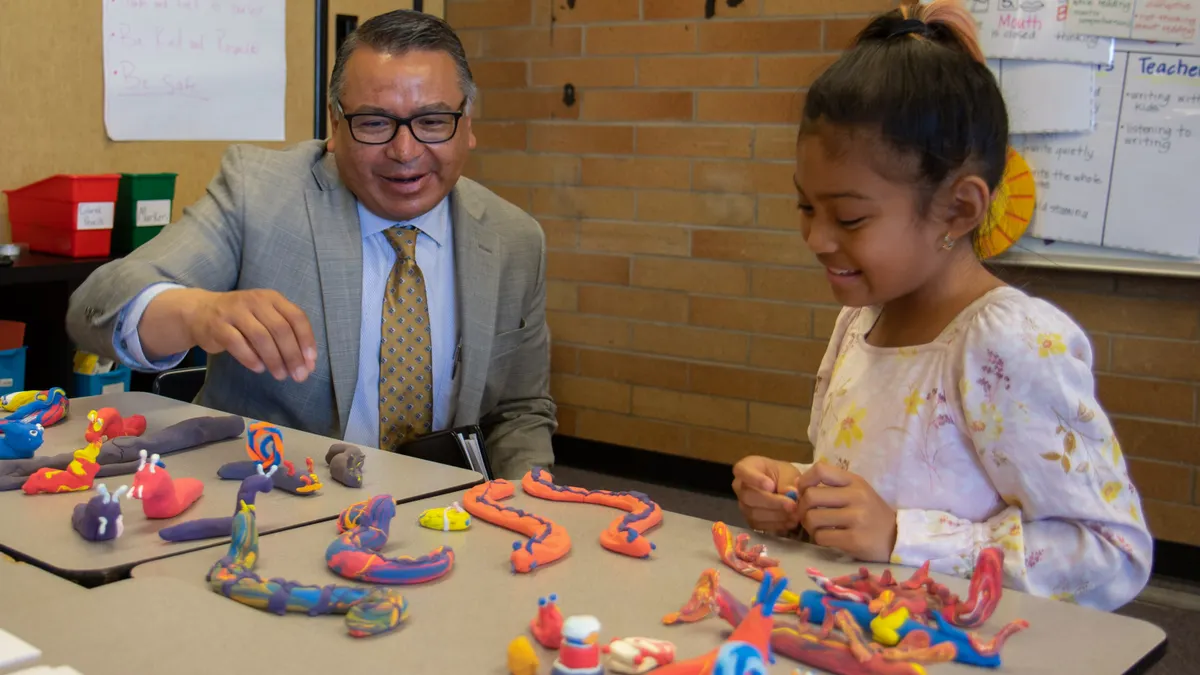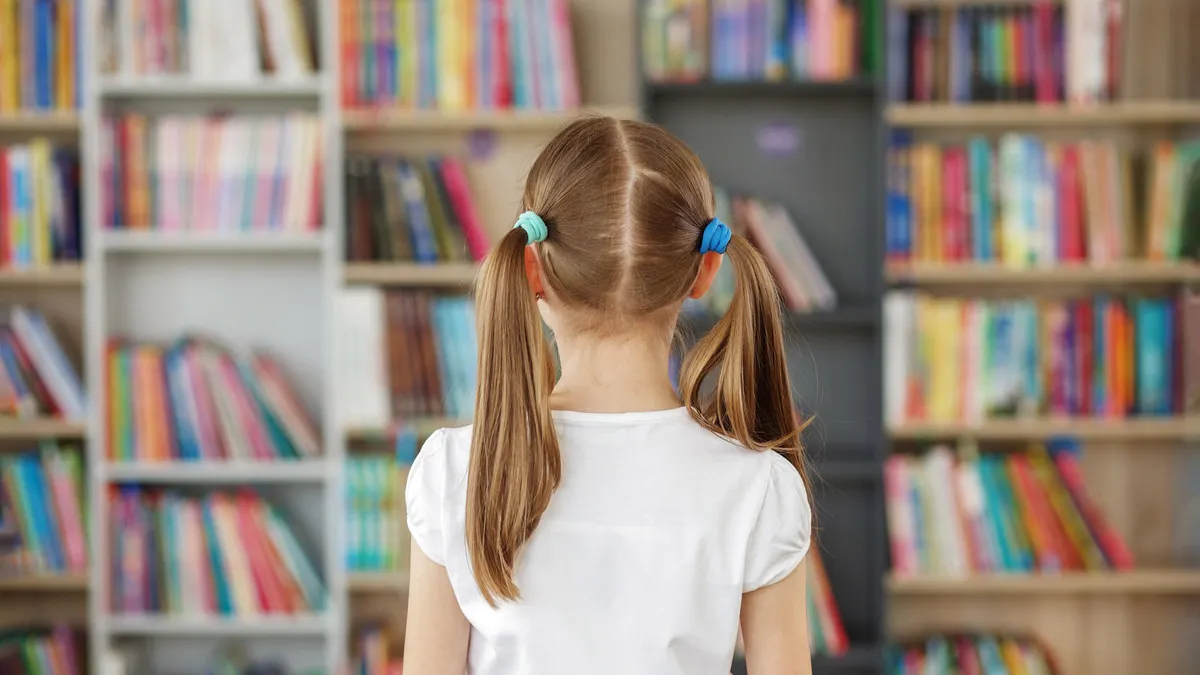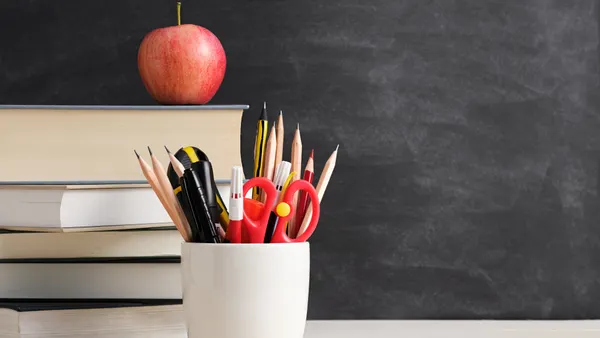While the COVID-19 pandemic did uncover many learning equity issues, it also brought about some positives in the form of investments in technology and new digital tools like web conferencing that have helped students, families and teachers better connect.
And though many educators and students were more than ready to return to in-person learning as schools began reopening last year, many of the new tools and models adopted during remote learning are being adapted for in-classroom use now.
Virtual learning models, for instance, have made it possible for leaders like Superintendent Scott Taylor of New Jersey's Township of Union Public School District to see how they can quickly pivot to online learning in emergencies. However, Taylor said, students in his district should still count on snow days.
“I would honor the traditional snow day code,” Taylor said. “And the first day would be an important down day.”
The days after? That’s not so clear.
But emergency days are just one area of learning re-imagined in the wake of COVID-19. From new grading systems to increased focus on flexibility, superintendents are finding new opportunities as school systems move forward.
Remote learning highlighted gaps
At Township of Union Public School District, all of the approximately 7,300 students now have chromebooks they can bring home at night “thanks to the pandemic,” said Taylor. The machines are assigned at the beginning of the school year, and students never have a moment when they can’t connect to their teachers, each other or their classwork.
Even if computers break, the district has some backups at hand. “We’re dependent on those machines,” Taylor said.
The pandemic also led the district to invest in virtual tools including Zoom and other web-based communication platforms that allowed parents to speak with teachers when school went remote and students to engage in virtual field trips.
To Taylor, all of the additional technology helped enhance in-person learning for when students returned physically to classrooms. He believes, for example, parents will engage even more now that they have a digital way to connect with their child’s teacher.
Even so, Taylor is vigilant about being able to quickly embrace a fully online learning scenario again. Students in his district have told him how awkward the past few months have been as they returned in-person and relearned how to socialize.
These concerns are an important factor to Taylor, signaling the district can’t lean entirely on technology if it ever has to shift back to online learning and must also focus on — and emphasize — a balance that fuses learning with the emotional need for social interaction.
“If we ever go back to a virtual leaning environment, we will be ever mindful technology can’t be a crutch,” Taylor said. “We will need to emphasize synchronous and asynchronous learning. That was one of our big takeaways with the kids.”
Changing grading system reduced the struggle
As superintendent of Yukon Public Schools in Oklahoma, Jason Simeroth could see students struggle throughout spring 2020 as they juggled school work with family demands amid the return to in-person learning.
That sometimes meant schoolwork was pushed aside when learners faced emotional stress, such as parents fighting at home. In those cases, he knew it wasn't for lack of trying that students weren't turning in work.
That led Simeroth, who has headed the system since 2014, to launch a 50-point grading scale, with 50 out of 100 being the lowest grade a student can get if they couldn’t complete an assignment. With a 50, students start from a higher number and have a better opportunity to improve their grade.
As he sees it, while a 50 is still failing, it’s easier to come back from a 50 than a zero.
“Parents and guardians will still see a 50,” Simeroth said. Under the old system, "you can have a solid B student who may get a 10 on an assignment or a 28 on a test. But that number doesn’t give them an opportunity that we adults think we deserve.”
Simeroth admits he didn’t invent the 50-point grading scale. He actually wanted to implement the approach in another district 15 years prior but didn’t think he could get approval. Even launching the new grading system in Yukon Public Schools required some adjustment to the "third order" change, he said.
“Morale-wise, it worked,” Simeroth said.
Try, try and try again
Superintendent Bill Chapman of Palacios Independent School District in Texas believes leaders always need to practice flexibility. The pandemic required that be taken to a new level.
“We had to do handstands,” Chapman said. “But it also showed our students that we can mess up and try again.”
Devices had to get quickly to students as the district went remote, and hot spots or other forms of internet access had to be purchased for many of those computers. Virtual learning had to remain asynchronous, though, as there was no guarantee every student would have access to a strong enough Wi-Fi signal or online connection to attend live classes.
Even so, Zoom conferencing was used and is among tools the district kept. Parents still connect in some cases with teachers online, and the district holds some planning meetings virtually as well.
To Chapman, this is all part of the same path — learning how to be comfortable with changes and remaining flexible to what comes next.
“This has all allowed our teachers to try more things,” Chapman said. “And it’s not just about technology, but different instructional methods and our communication methods, too."















